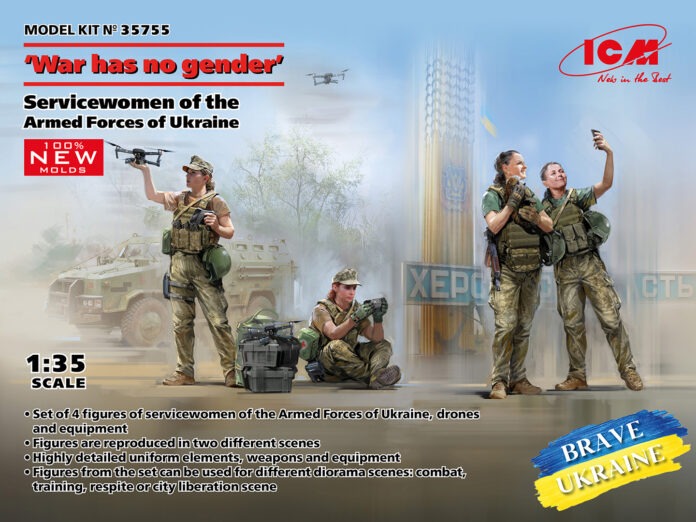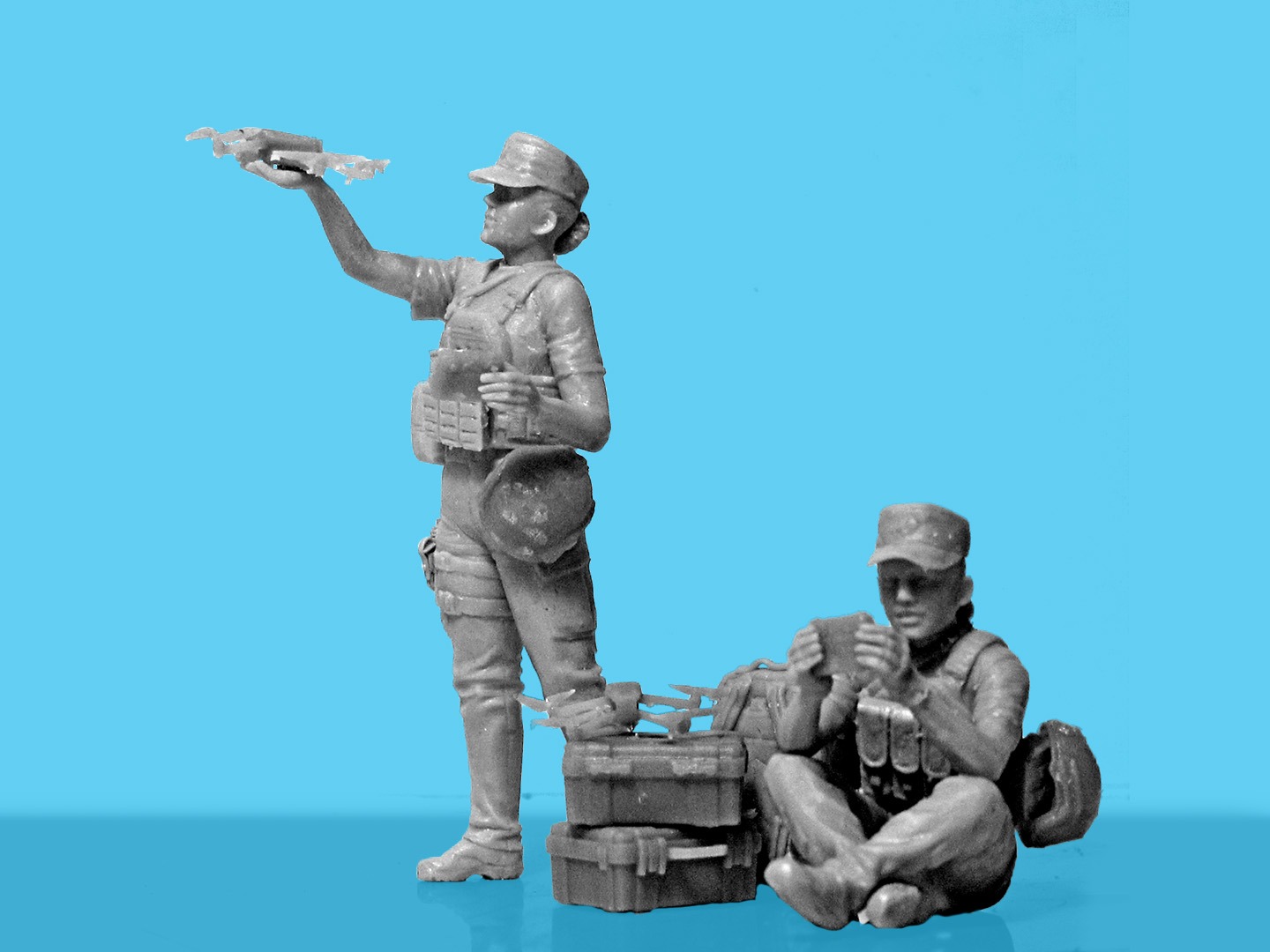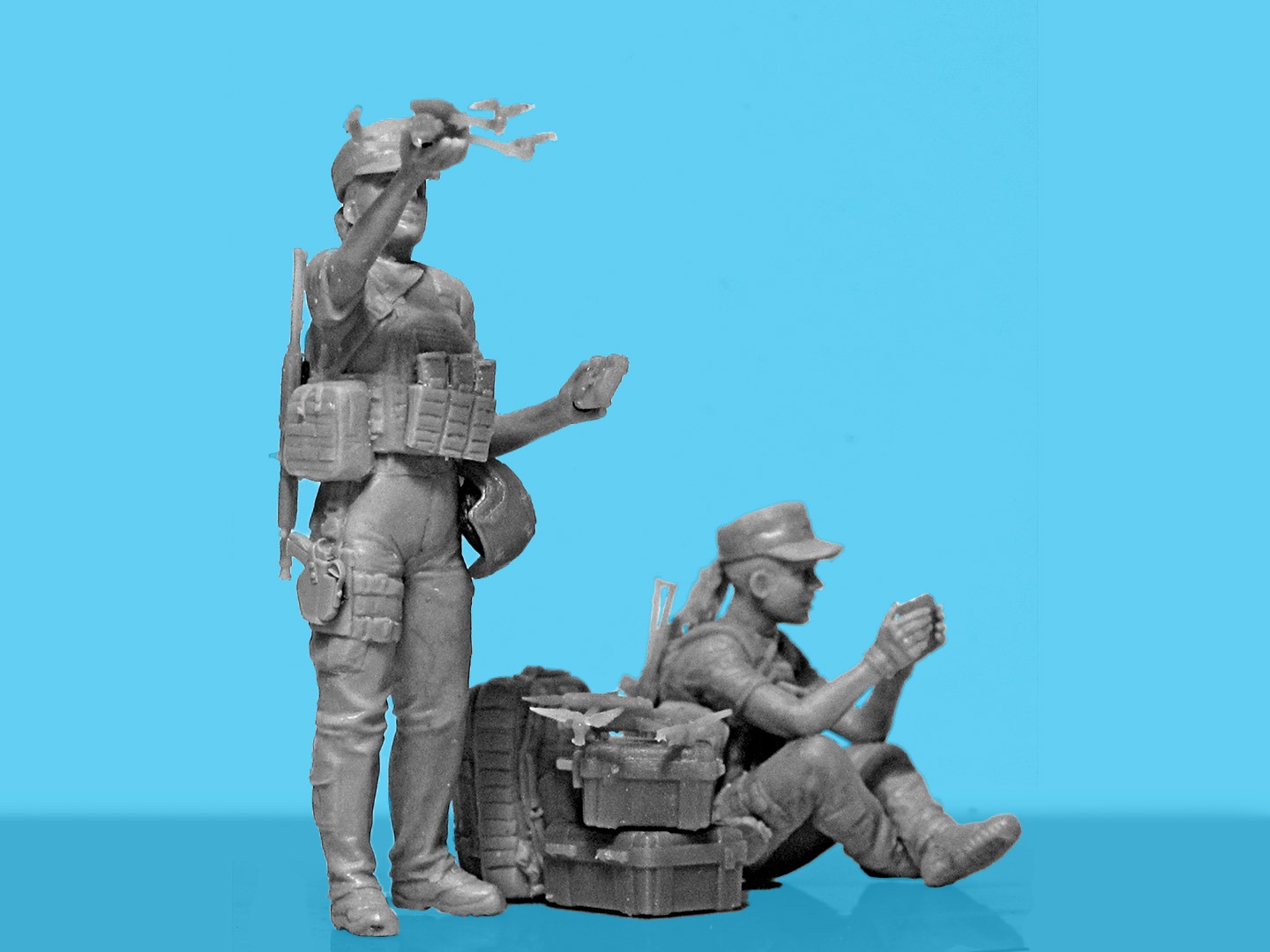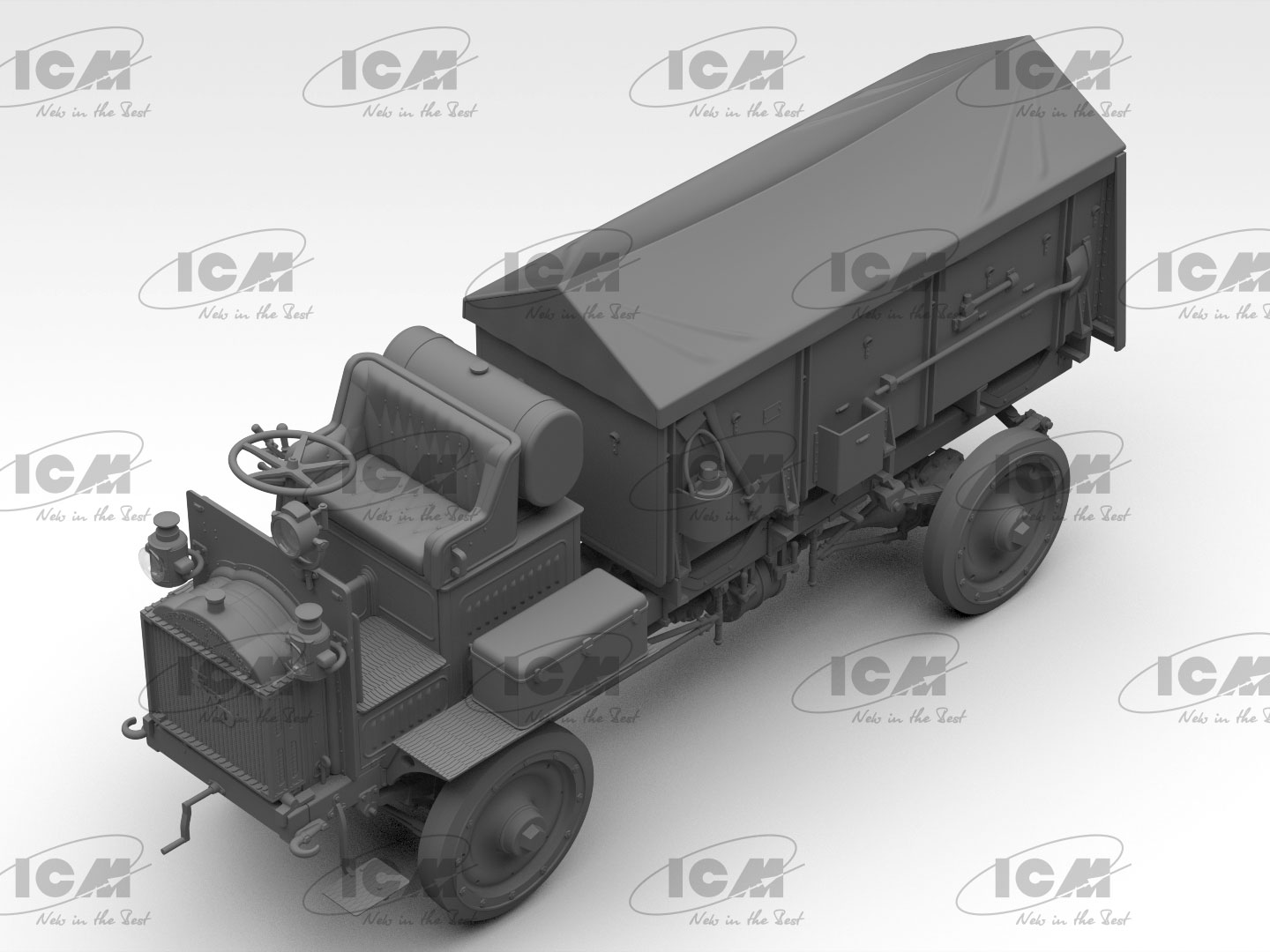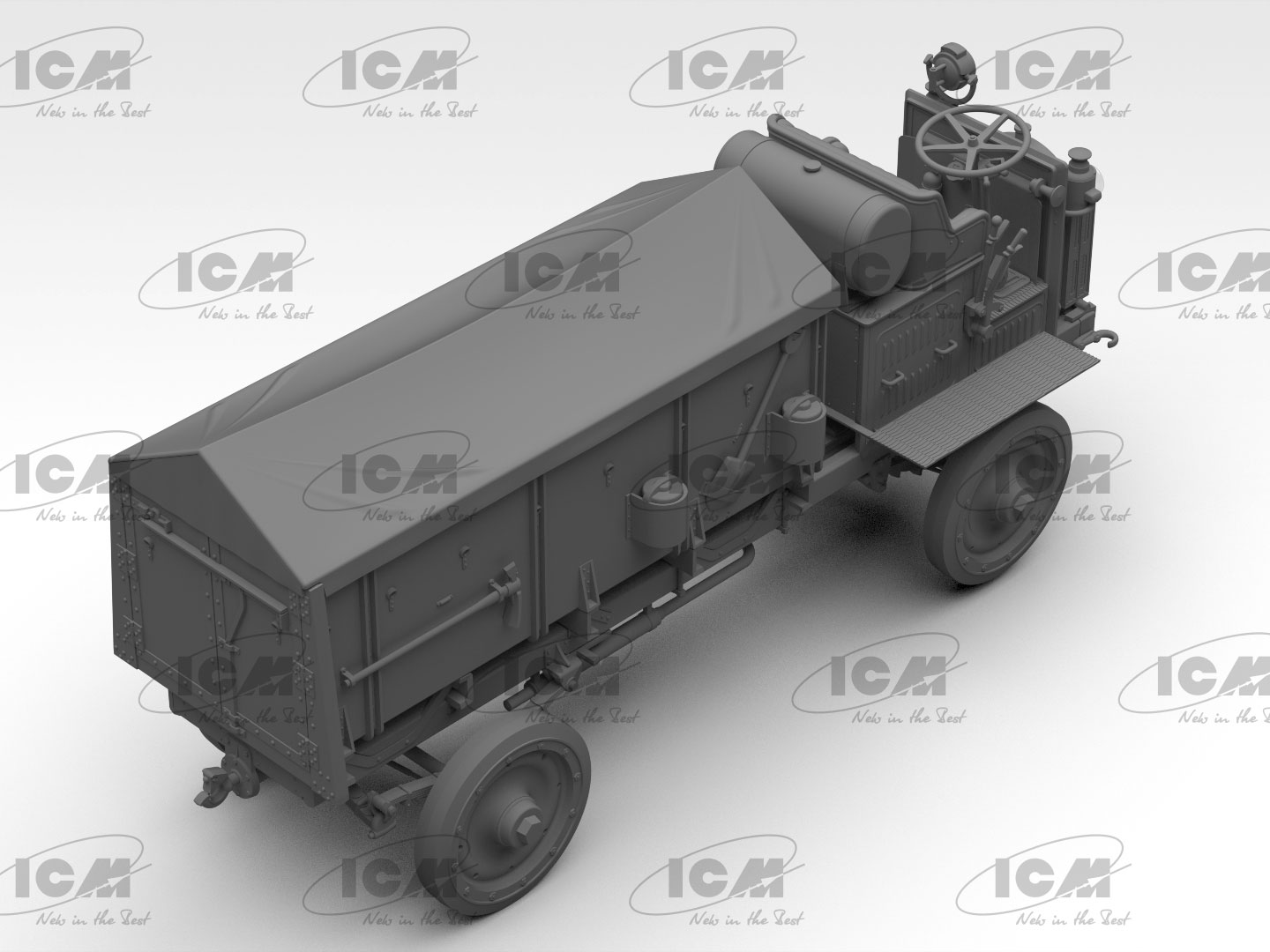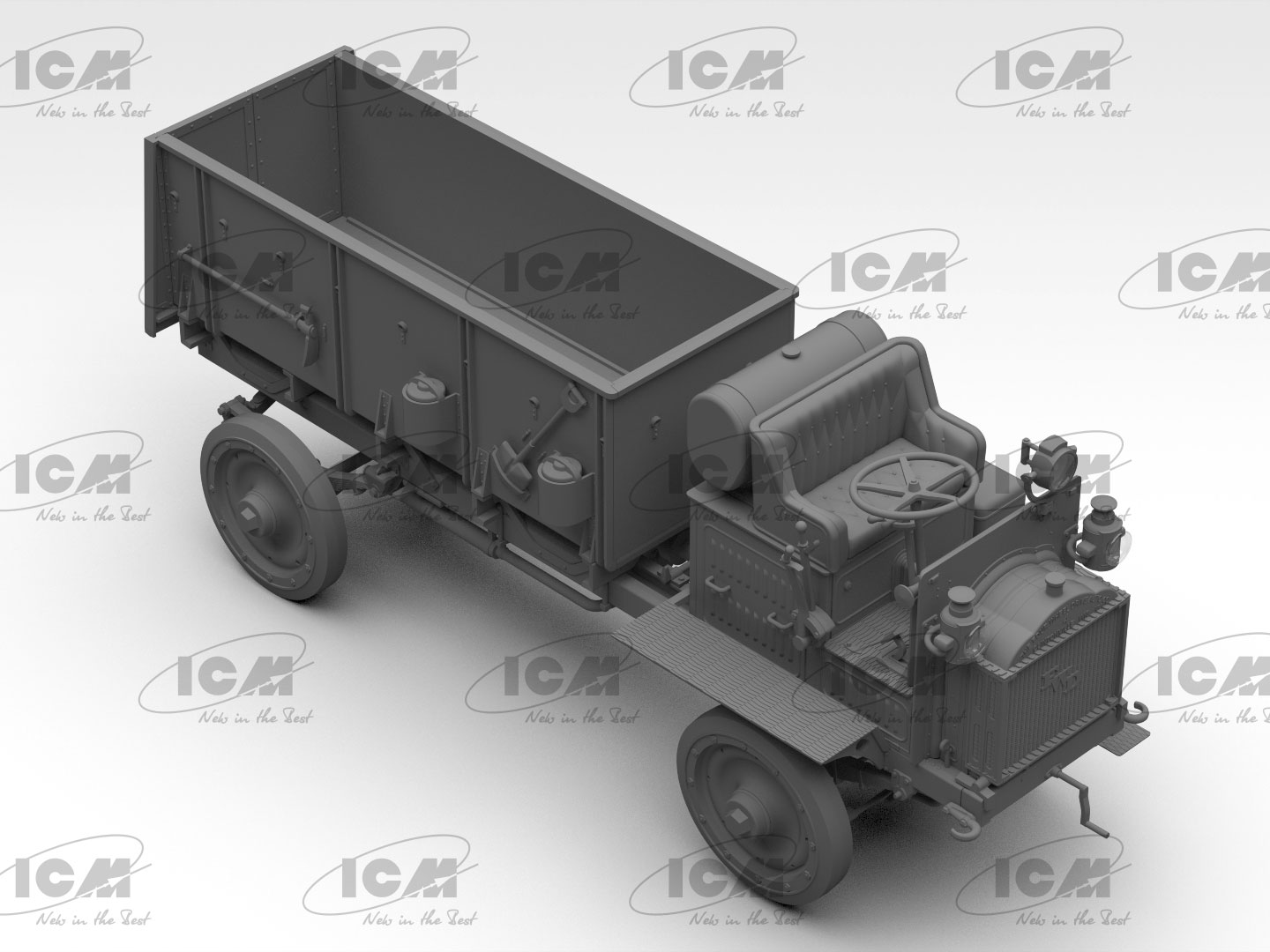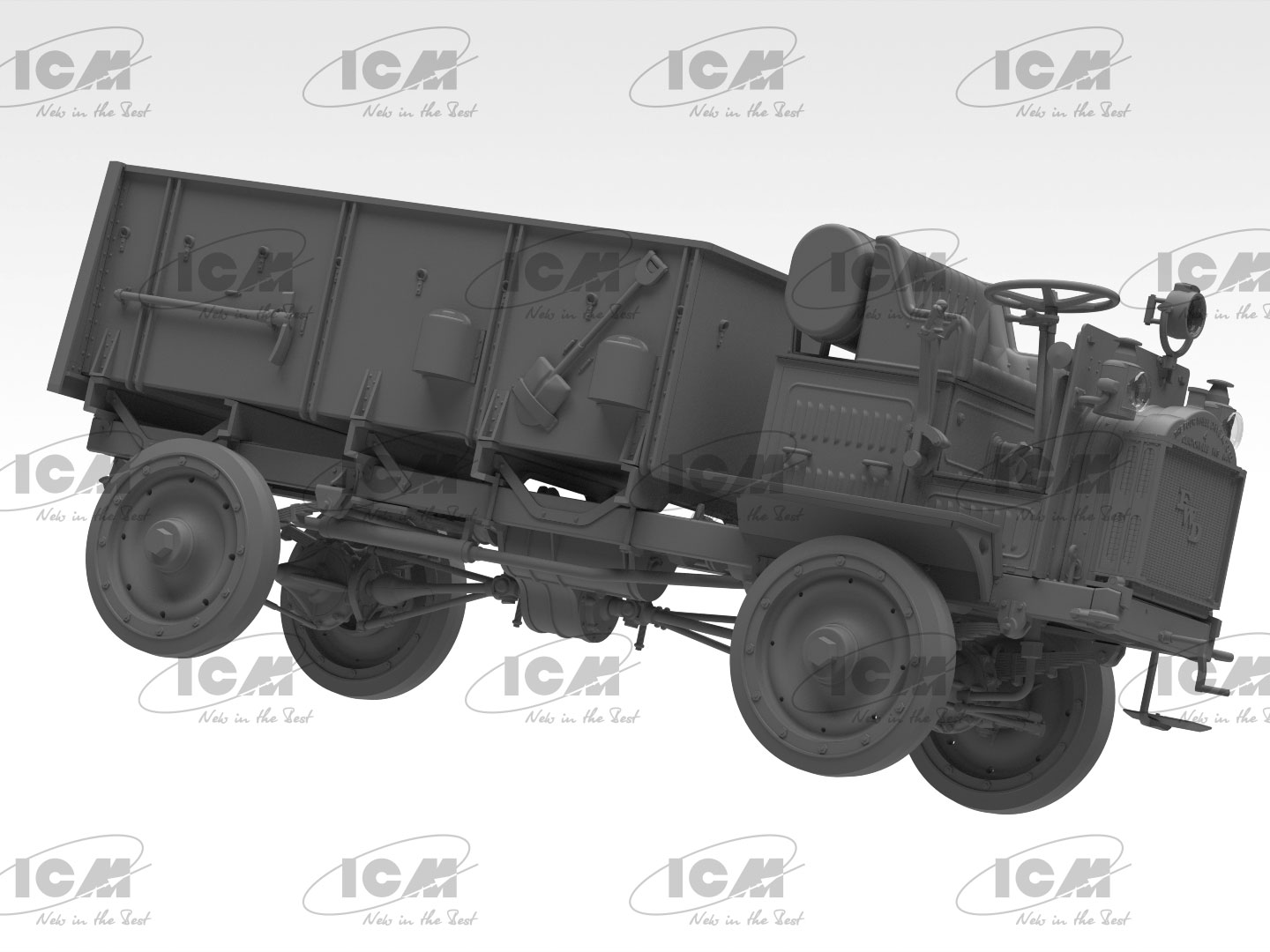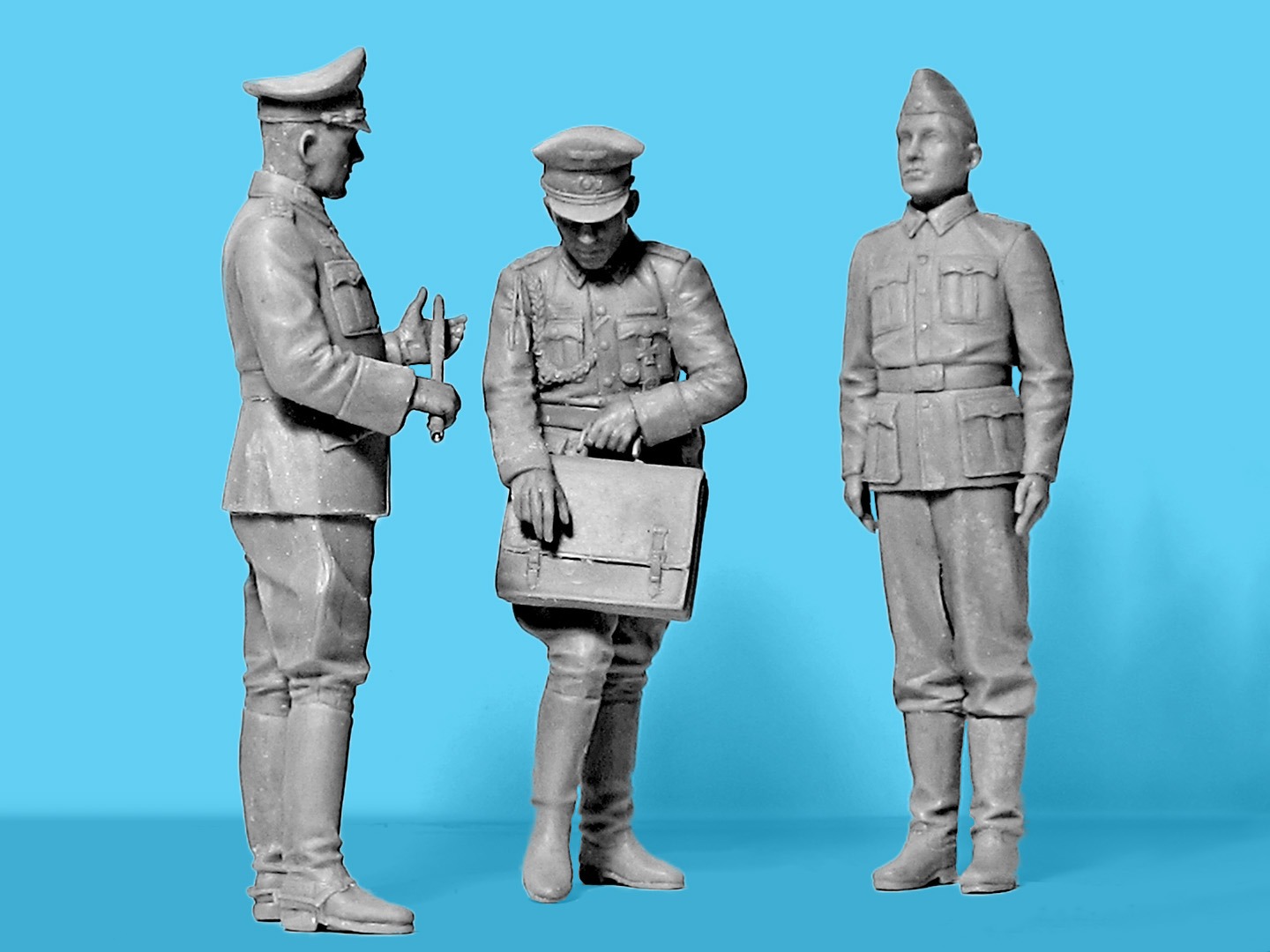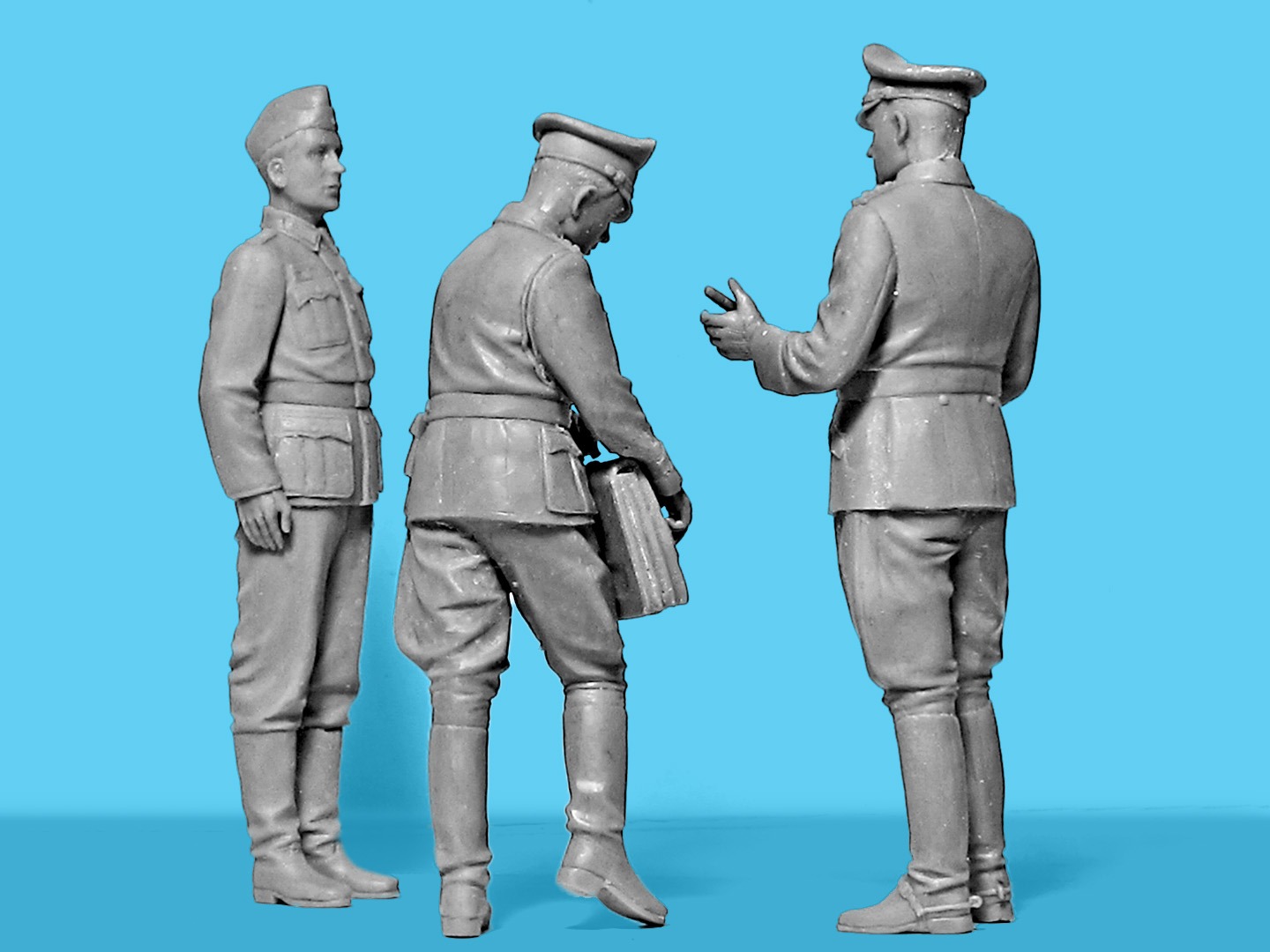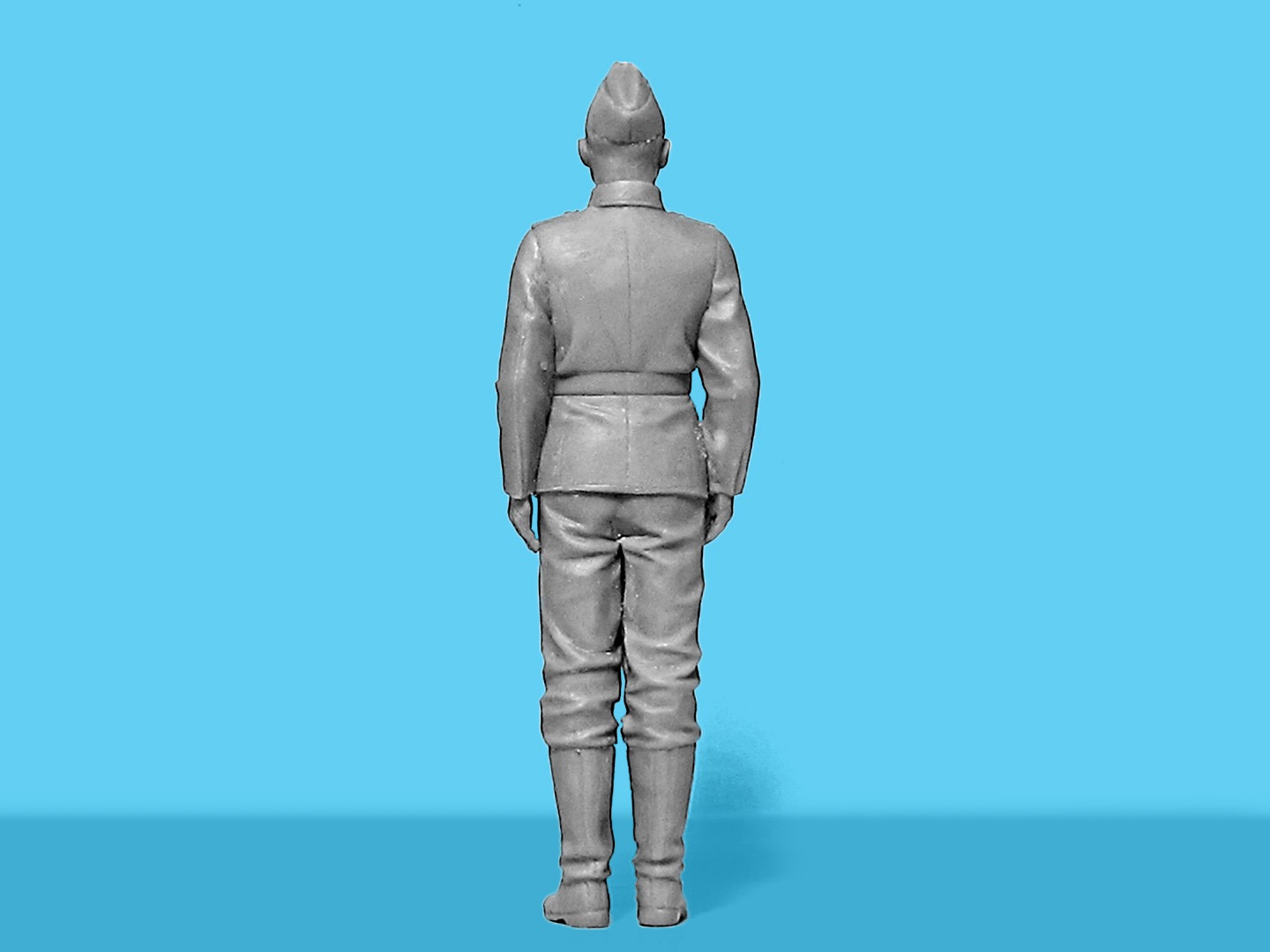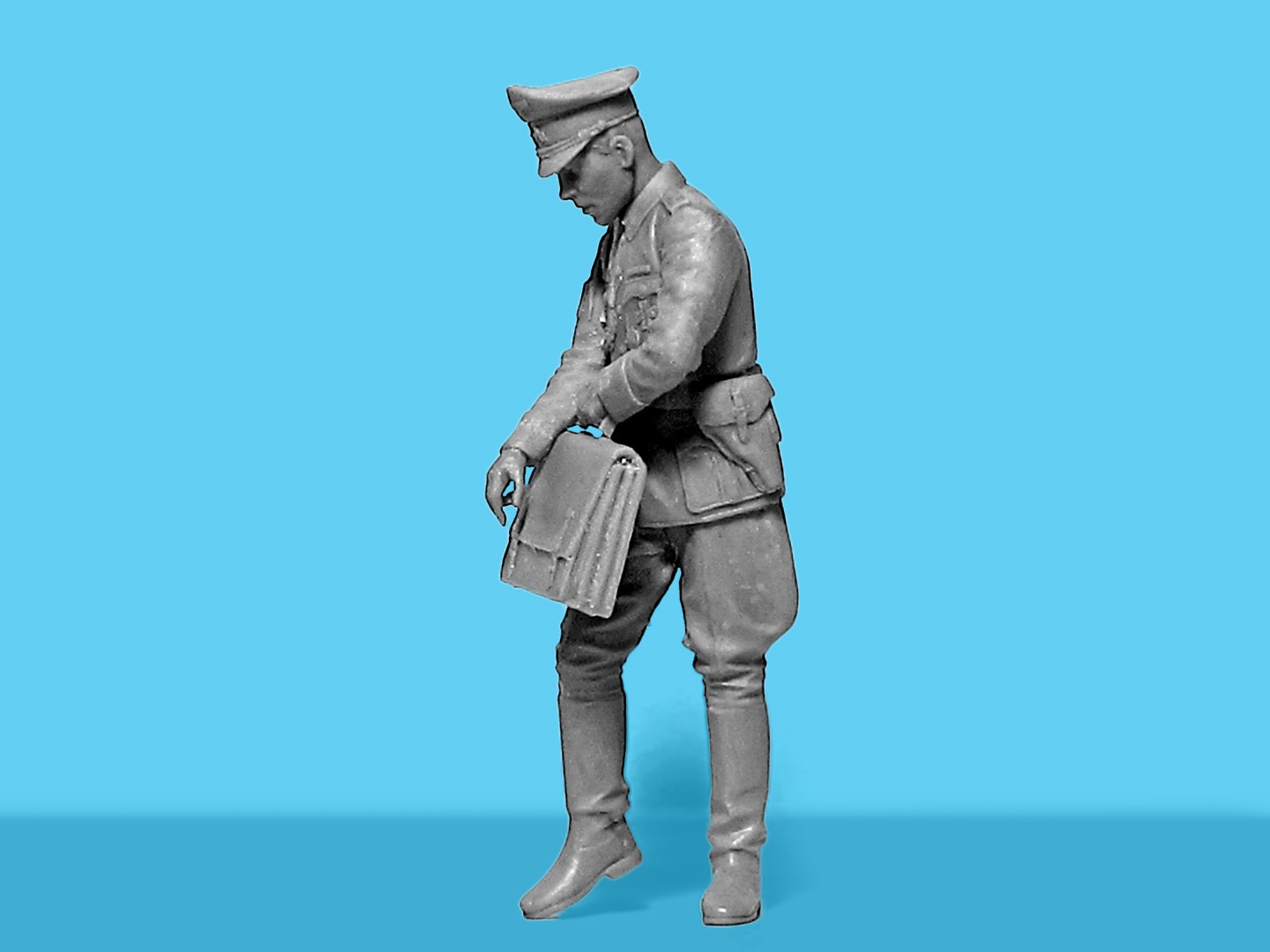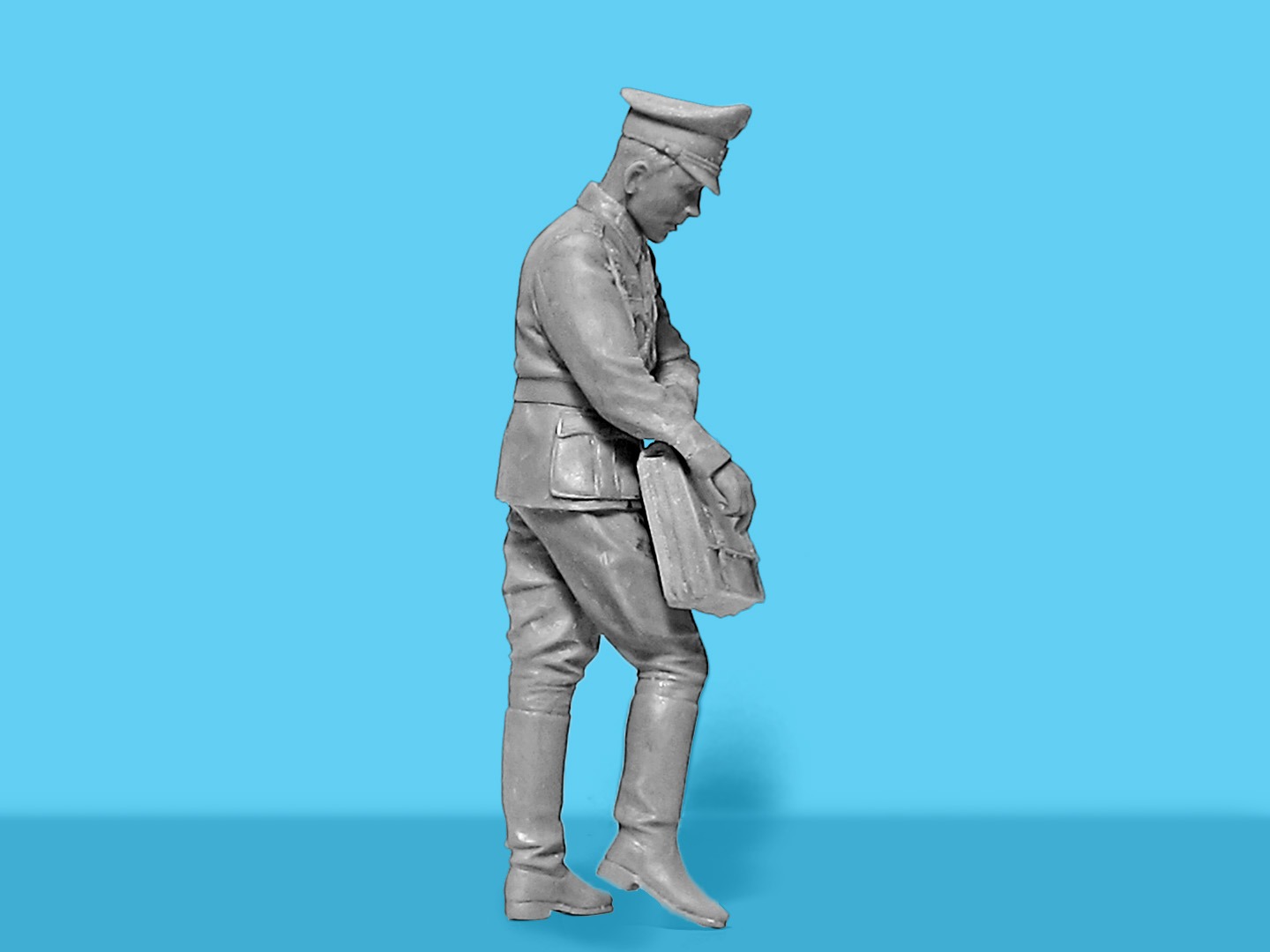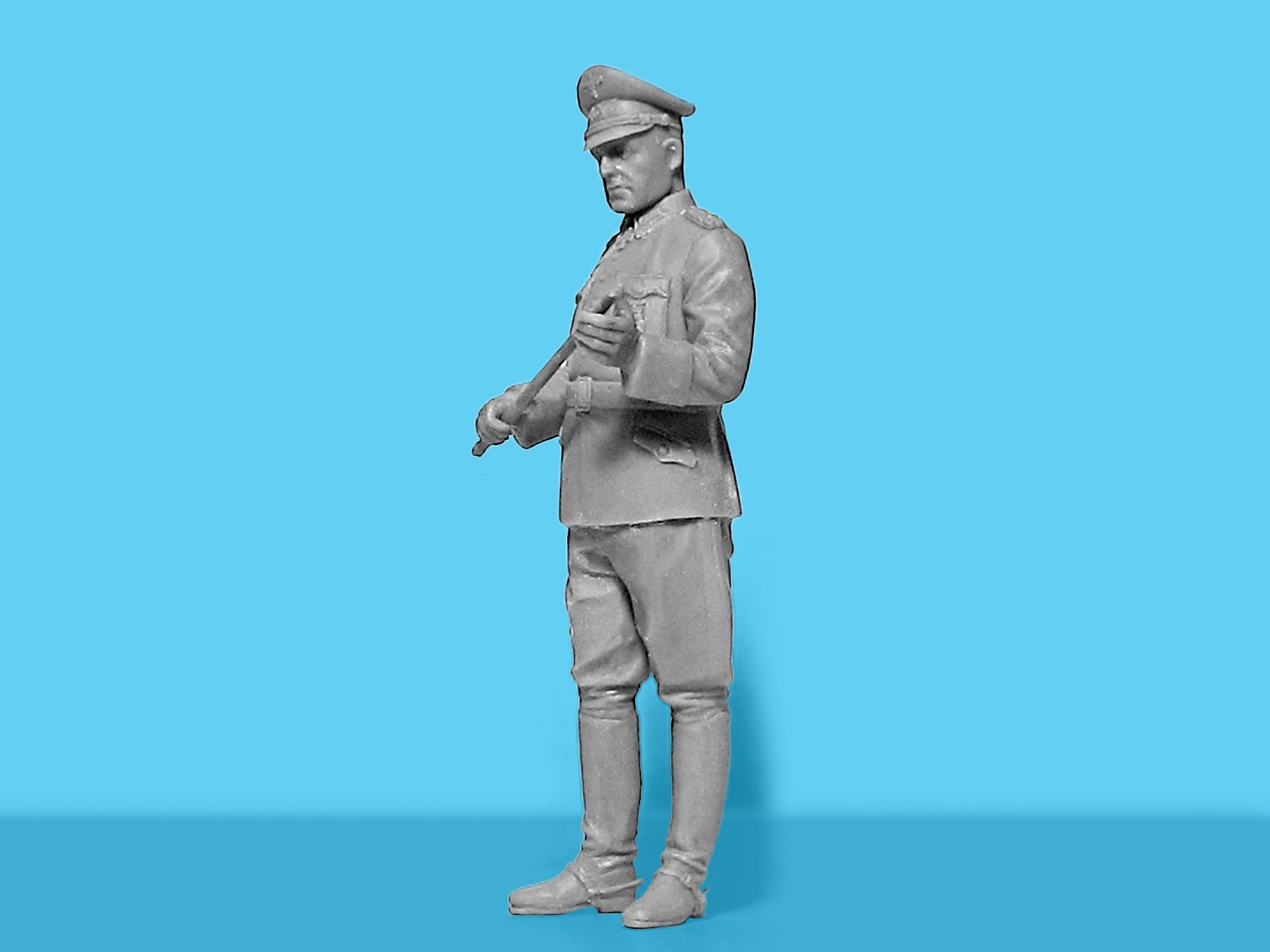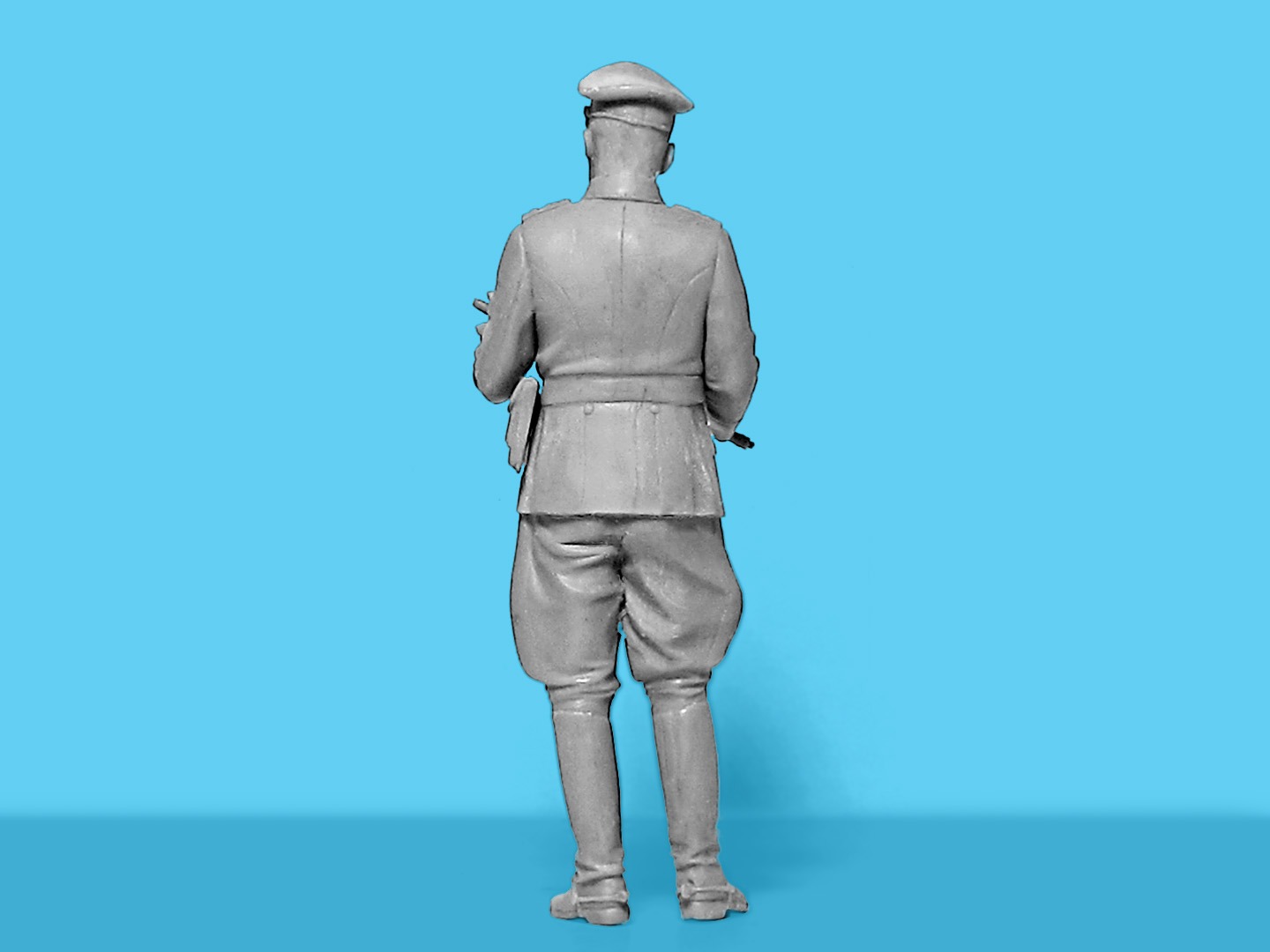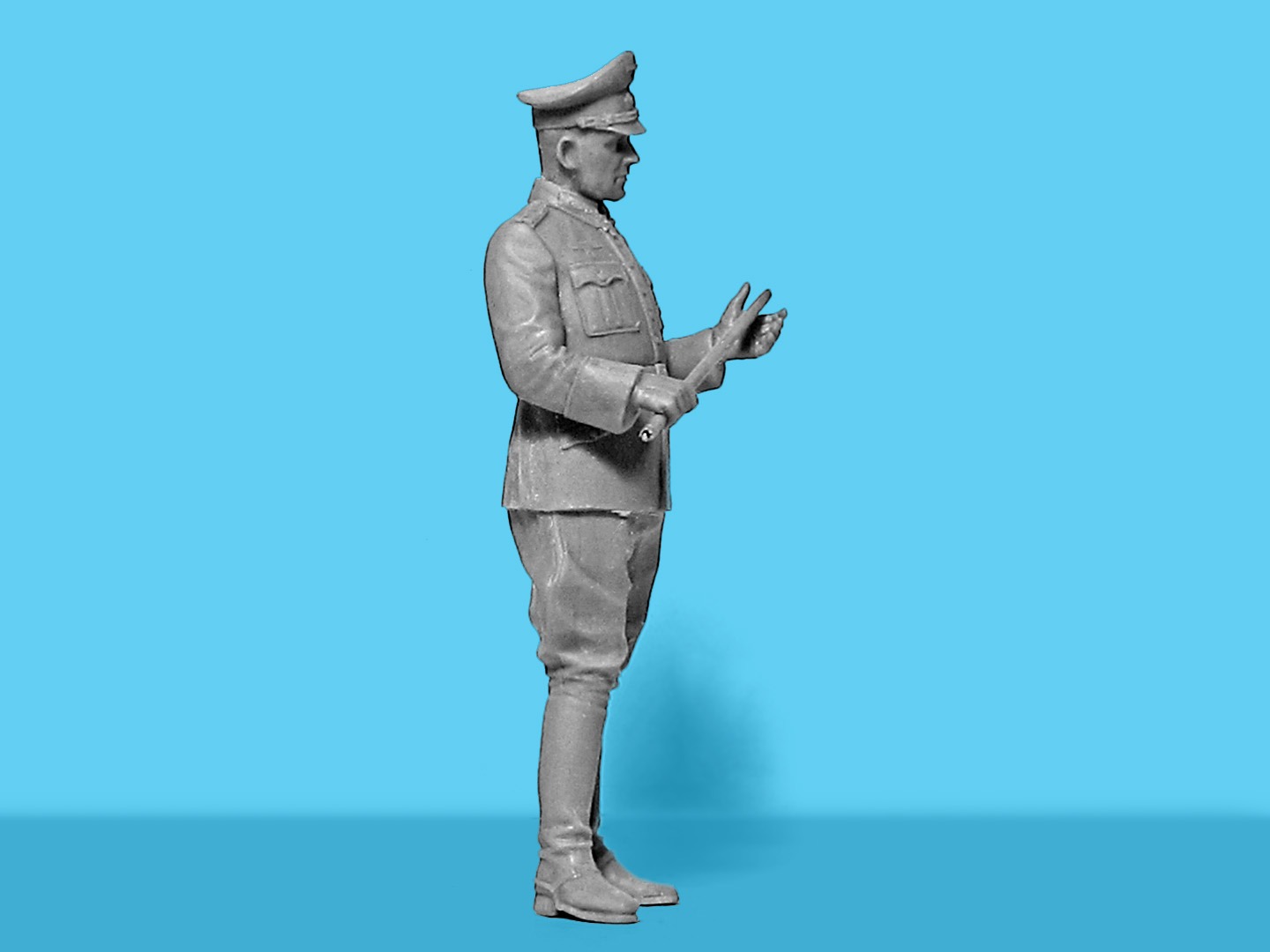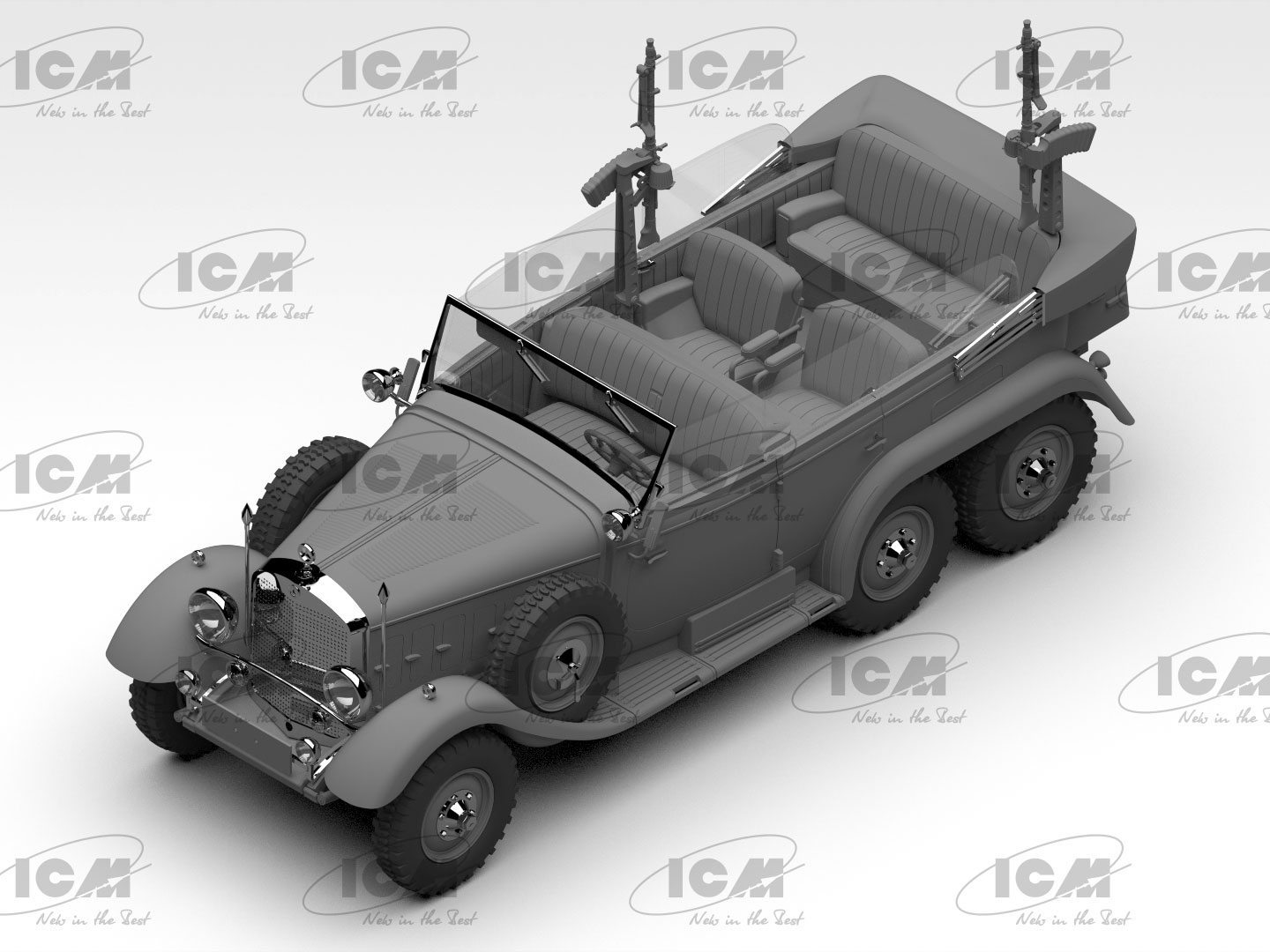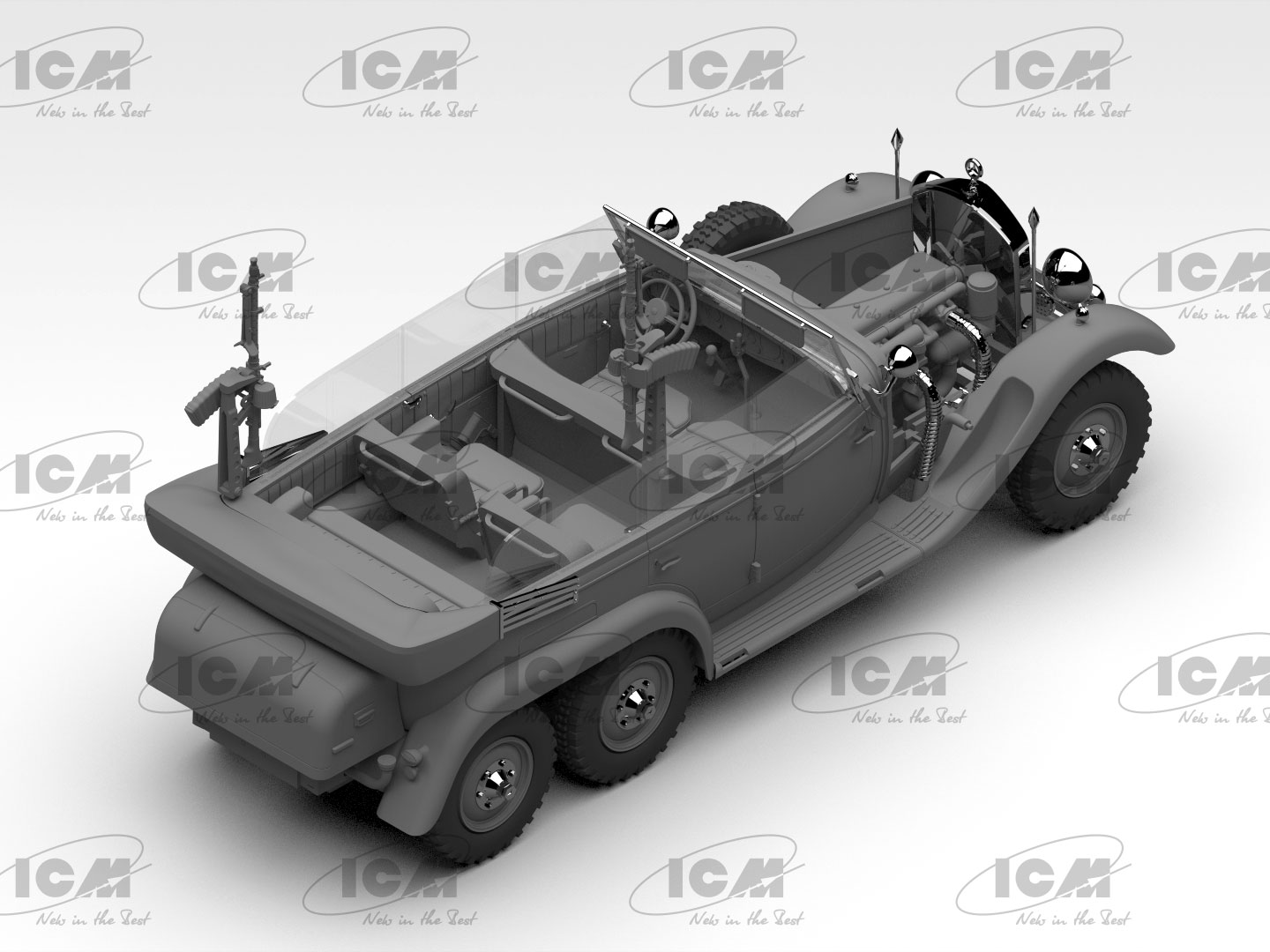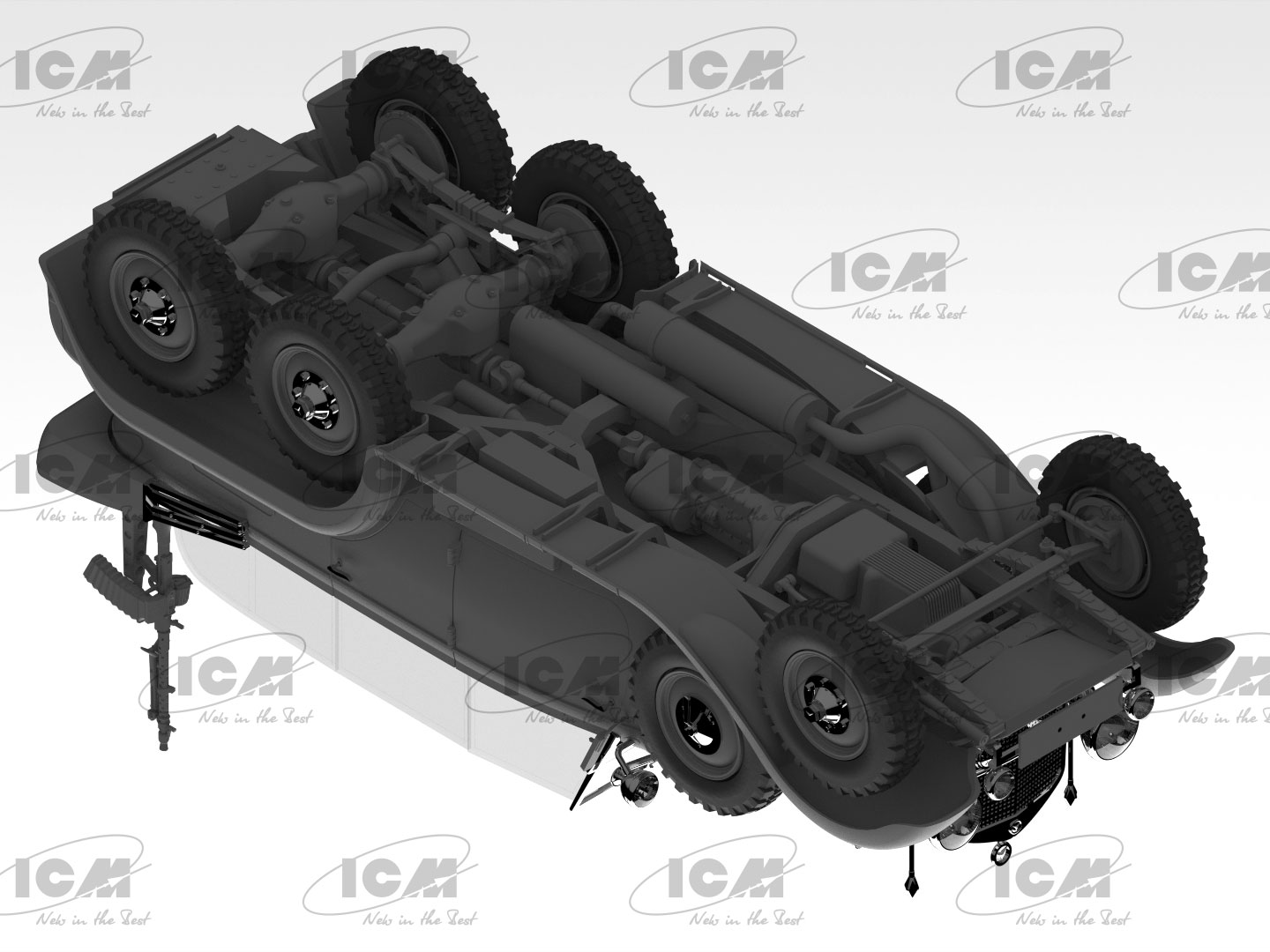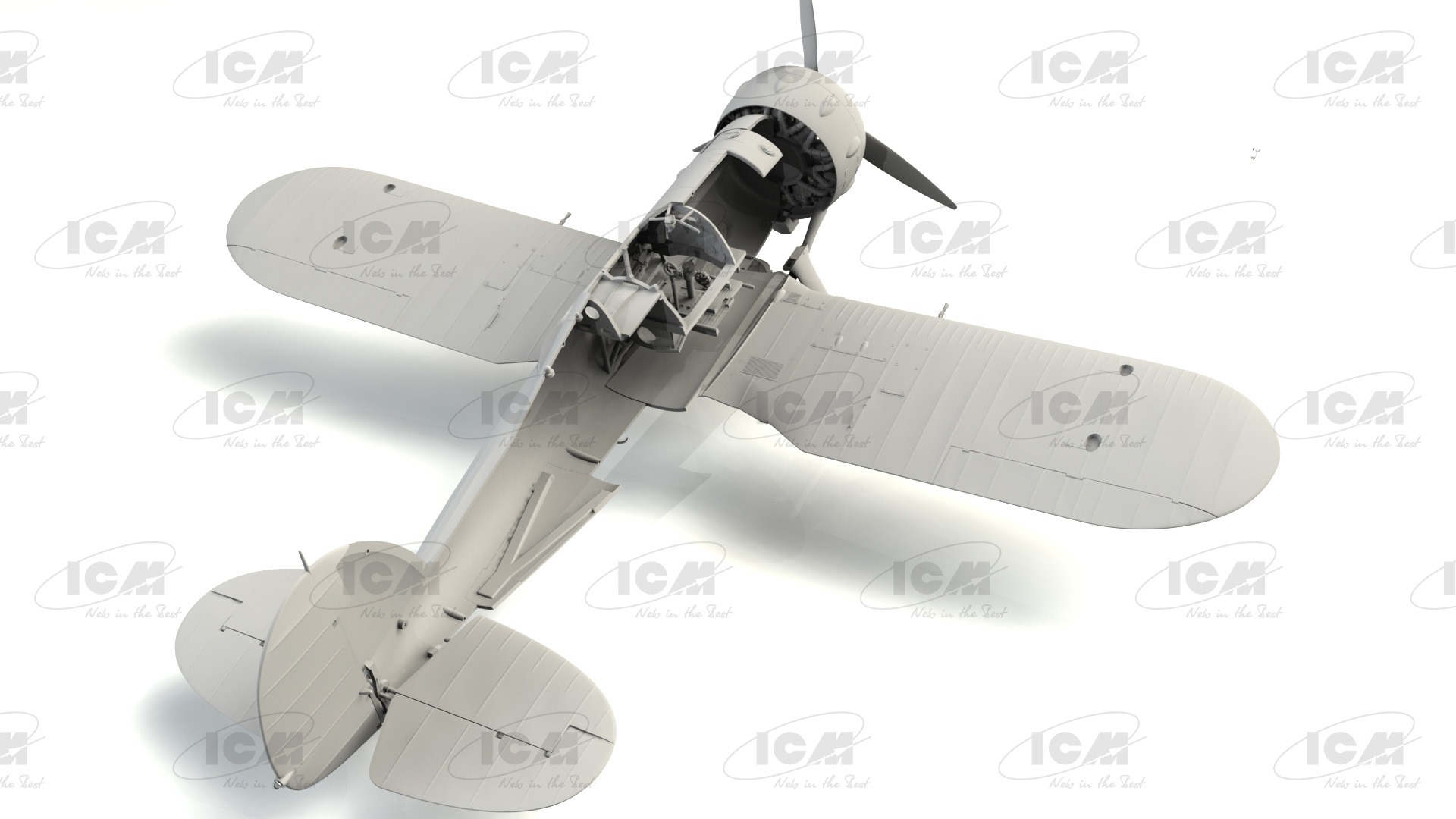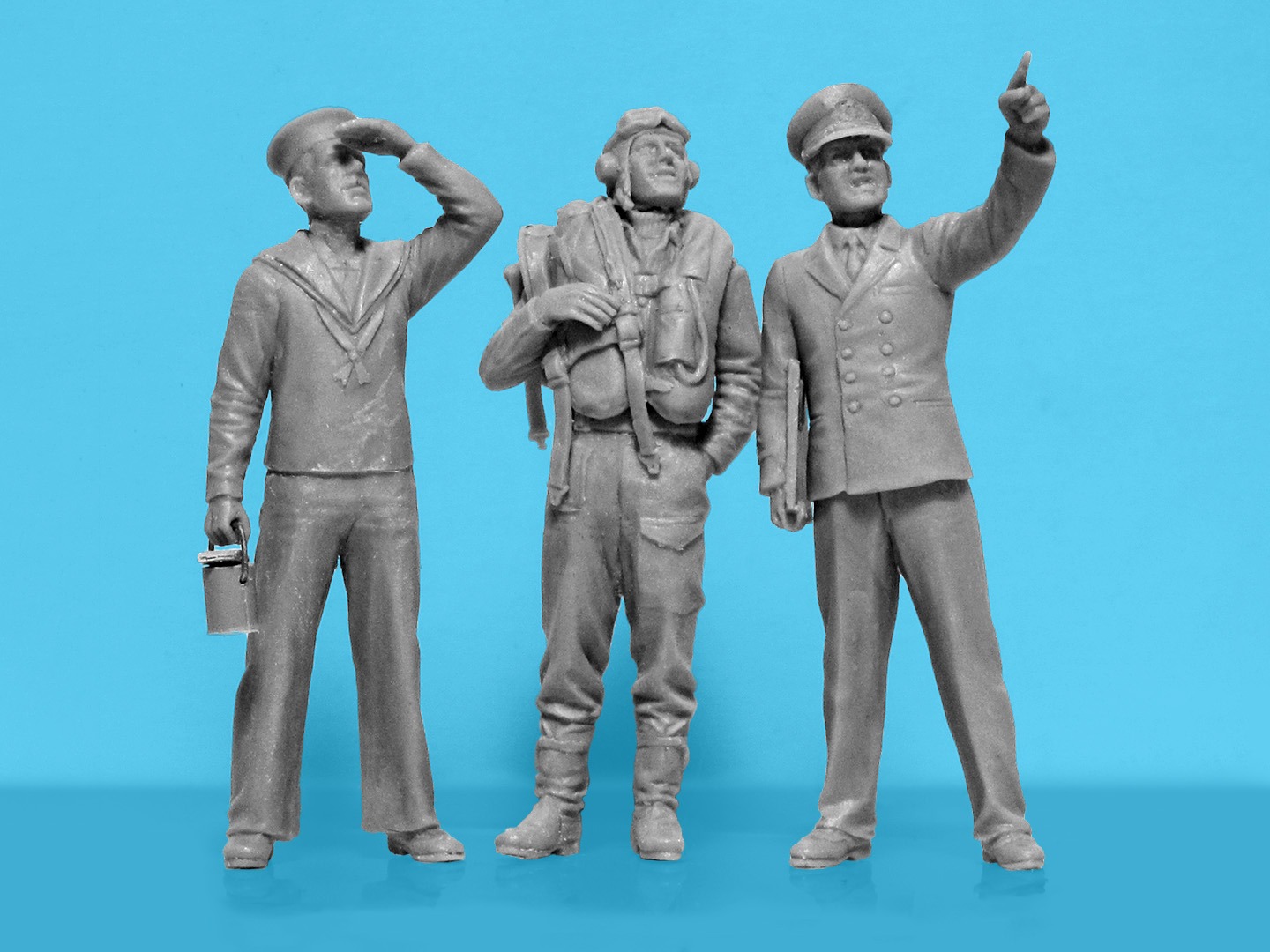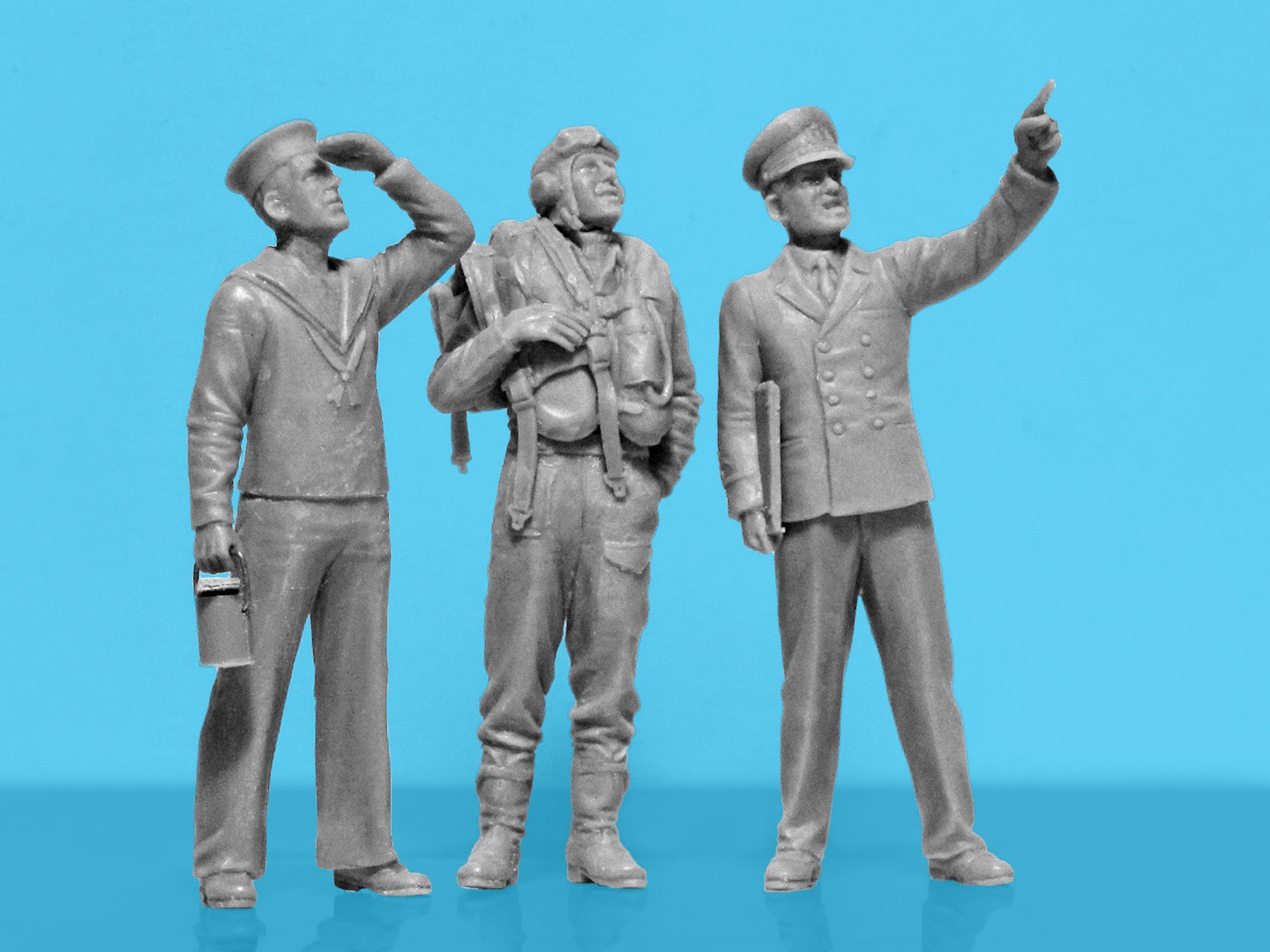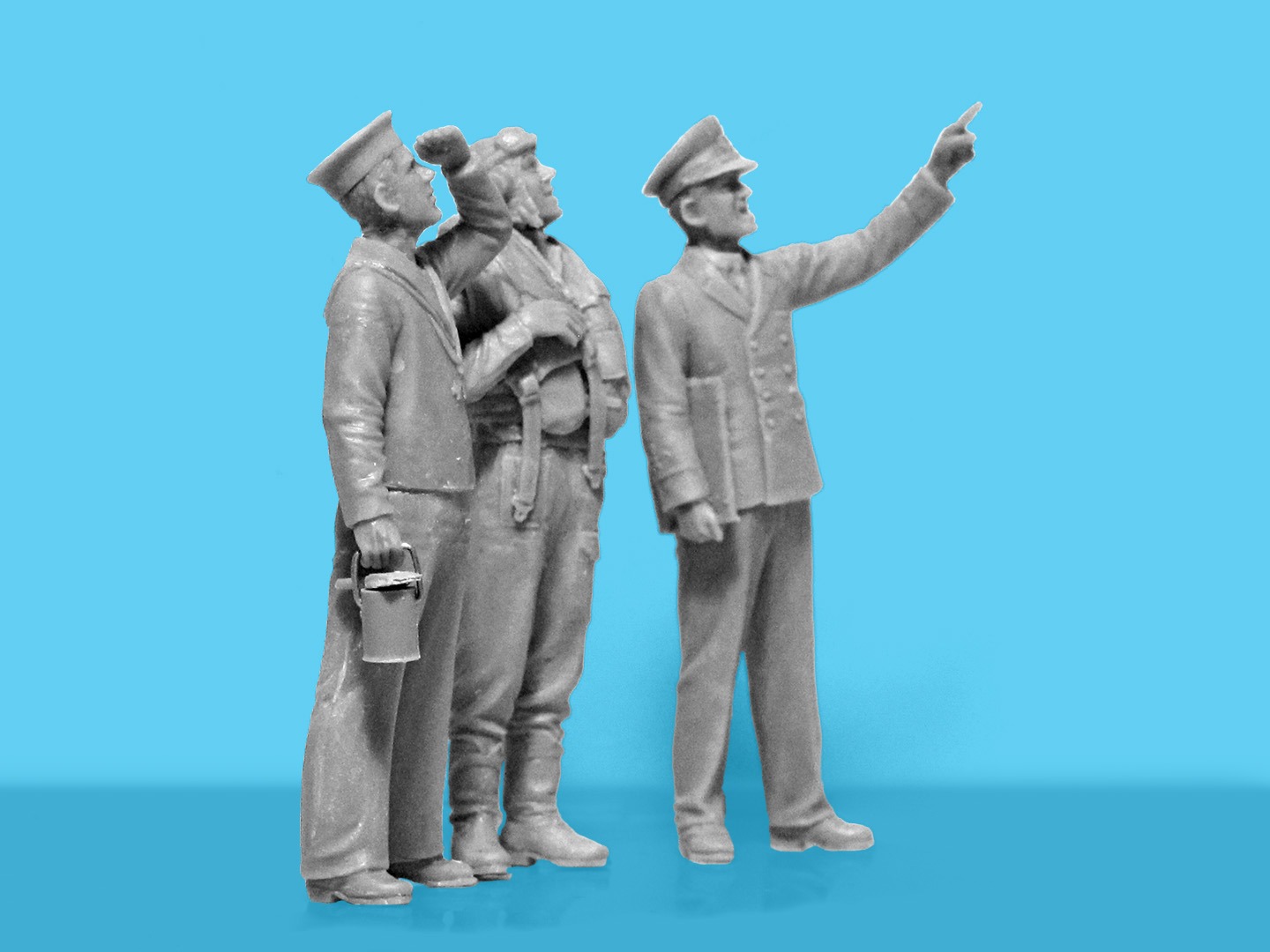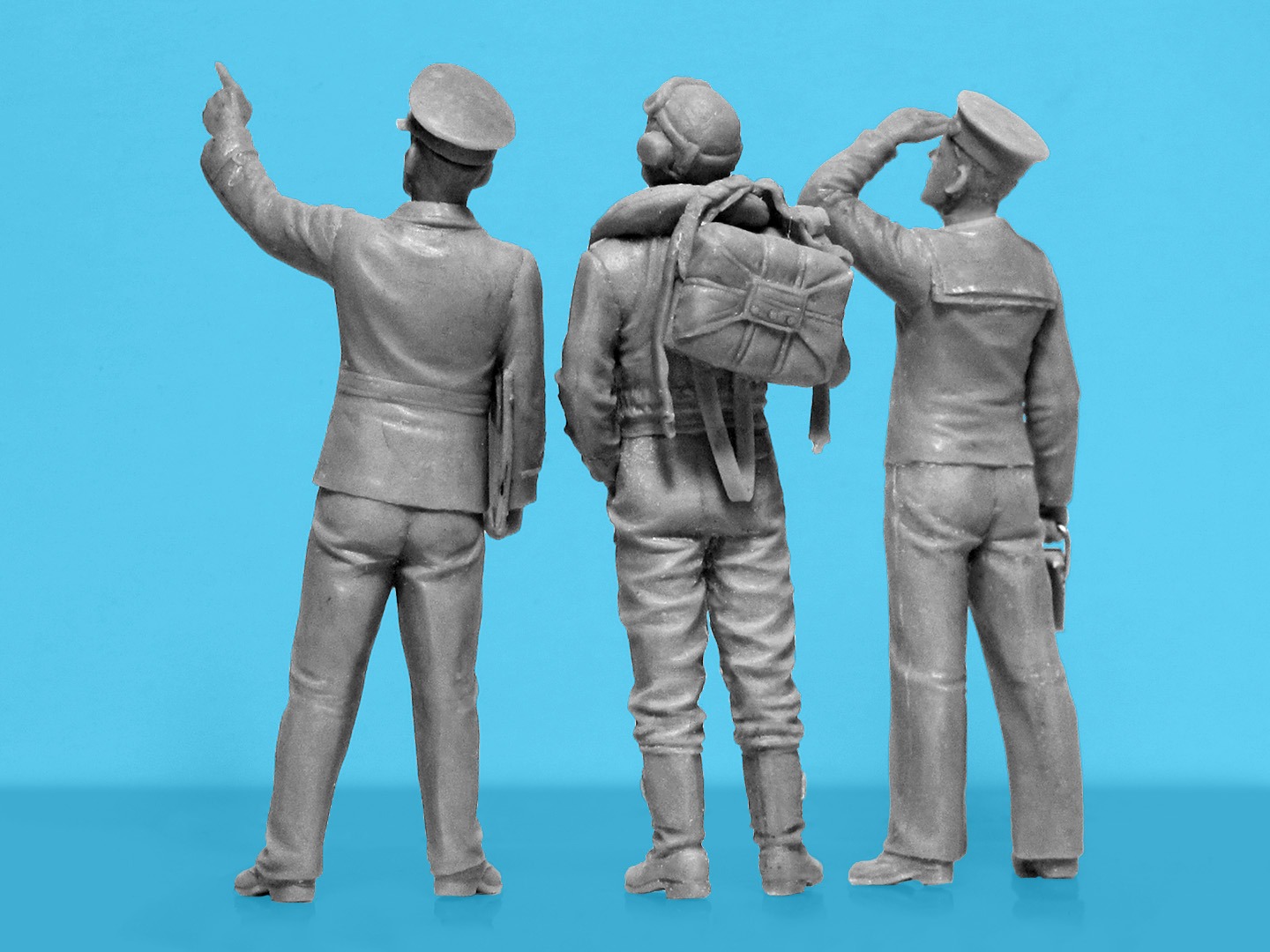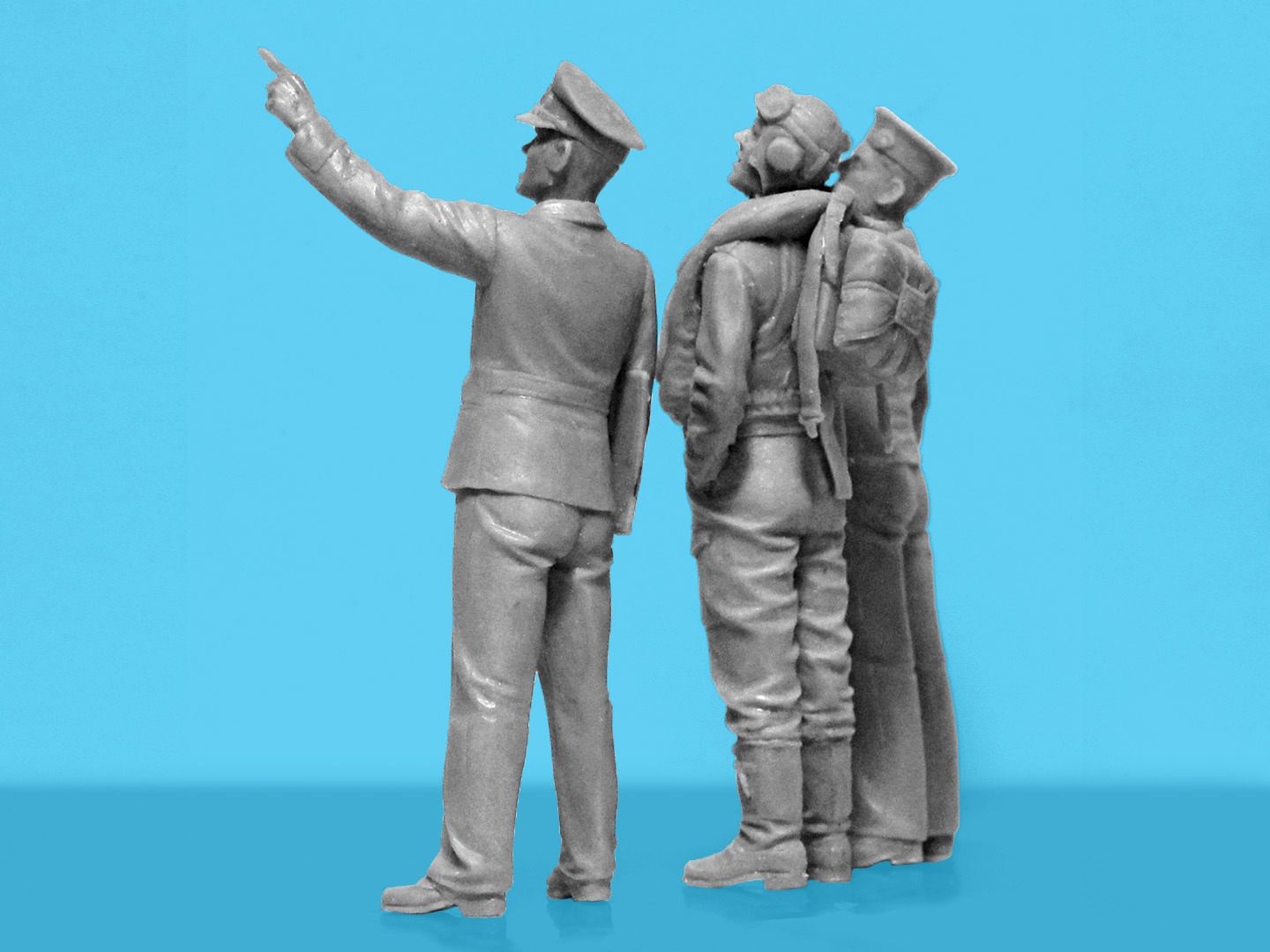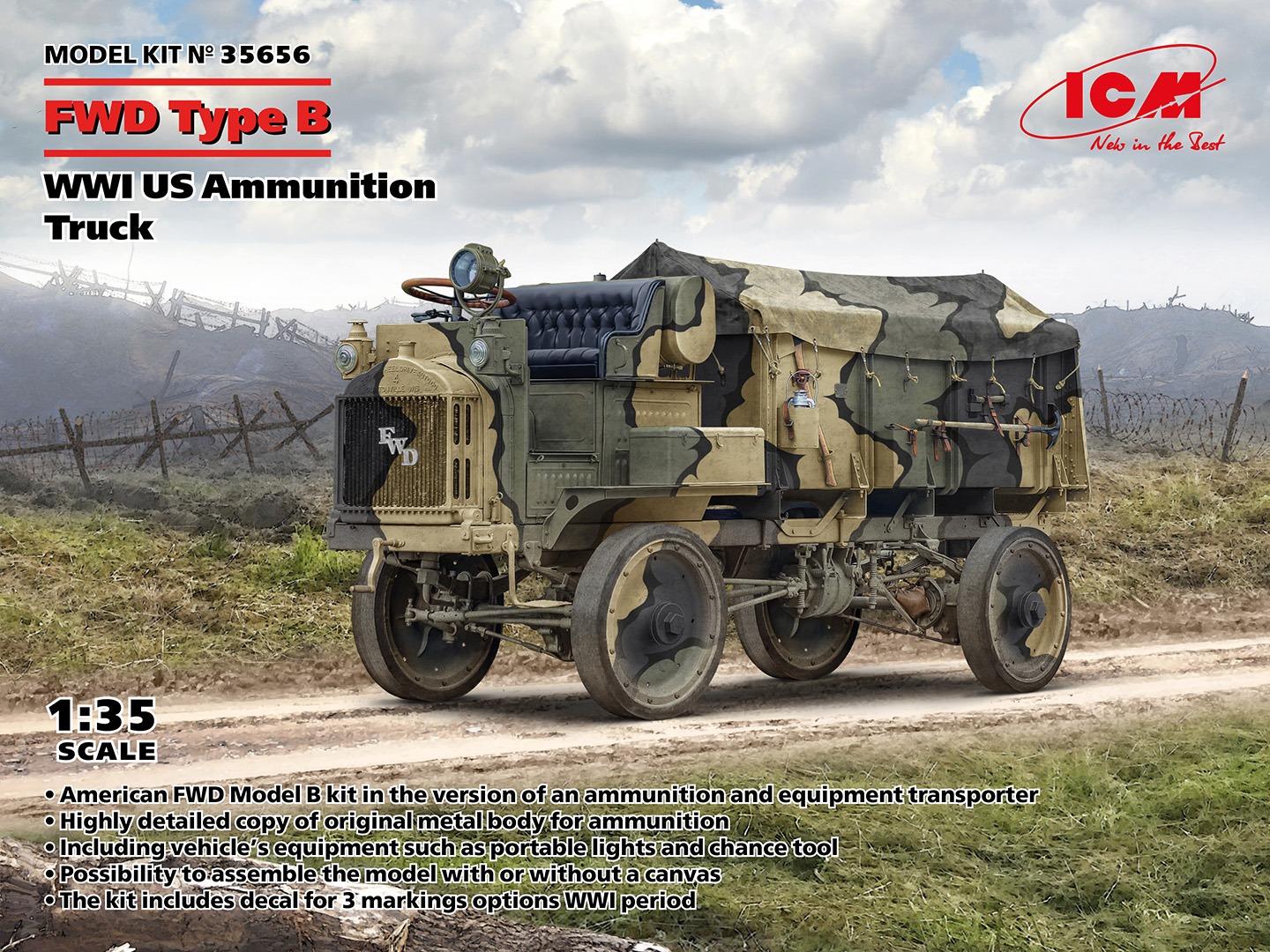 1/35 FWD Type B
1/35 FWD Type B
WWI US Ammunition Truck
The American company FWD (Four Wheel Drive Auto Company) was once an innovative enterprise that developed and produced four-wheel-drive vehicles. One of these cars, the 3-ton FWD Type B truck, had a classic hoodless layout with the driver’s position above the engine compartment. The driver was located directly on the hood of the 4-cylinder engine with a capacity of 36 hp, the radiator was located in front of the cabin. During World War I, the U.S. Army ordered 15,000 of these vehicles, known as the “Truck, 3-ton, Model 1917.” In fact, over 14,000 units were delivered, with additional orders coming from Great Britain and Russia. At the same time, the U.S. Ordnance Department developed a body model for transporting ammunition, and some FWD Type B vehicles were equipped with similar bodies. These ammunition transporters were used by the American Expeditionary Forces in Europe, where they carried artillery shells and various equipment. Additionally, they were involved in towing artillery pieces.
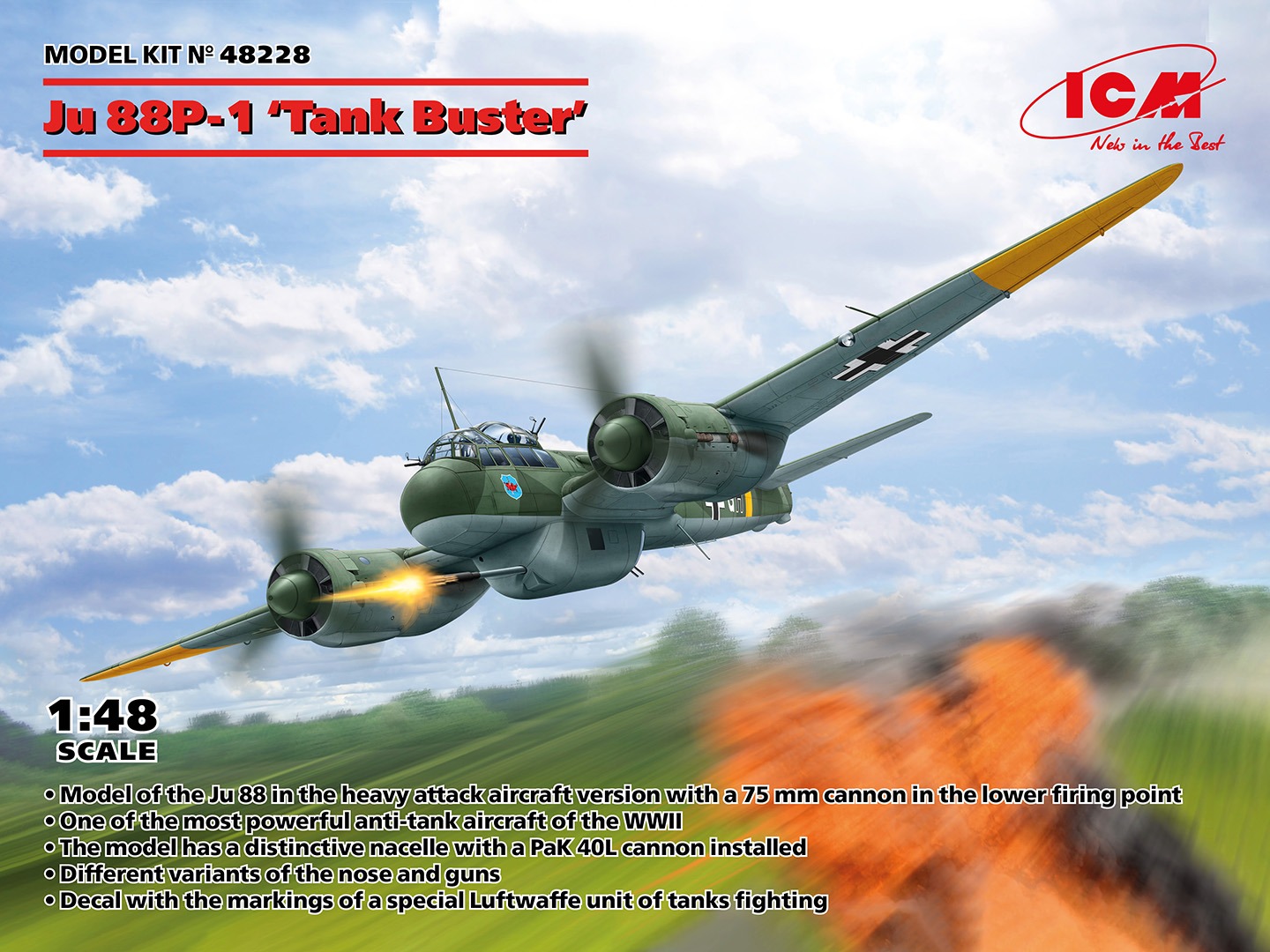 1/48 Ju 88P-1 “Tank Buster”
1/48 Ju 88P-1 “Tank Buster”
In early 1942, the Luftwaffe command became obvious the need to create an anti-tank aircraft that could hit the armor of Soviet medium and heavy tanks. In the summer of 1942, a decision was made to convert a small batch of Ju 88A-4 bombers into anti-tank versions, later they received the designation Ju 88P-1. In the large ventral gondola of these aircraft was a 75-mm PaK 40L anti-tank gun (also known as BK 7.5) with an electro-pneumatic loading system, the gondola in an extreme situation could be dropped using pyrotechnic devices. The aircraft’s engines were protected with armor. Initially, the nose of the aircraft remained glazed, like a regular Ju 88A-4 bomber, but the test results showed that the glass could not withstand the action of gases during the shot. Therefore, the Ju 88P-1 was later modified with a nose section devoid of glass, borrowed from the Ju 88C fighter, and the muzzle brake was also changed. By September 1943, 18 copies of this aircraft were produced, some of them fell on the Eastern Front as part of the Versuchskommando für Panzerbekämpfung. Subsequently, six Ju 88P-1 were transferred to the 1st Hindenburg Bomber Squadron. (Kampfgeschwader 1 “Hindenburg”).
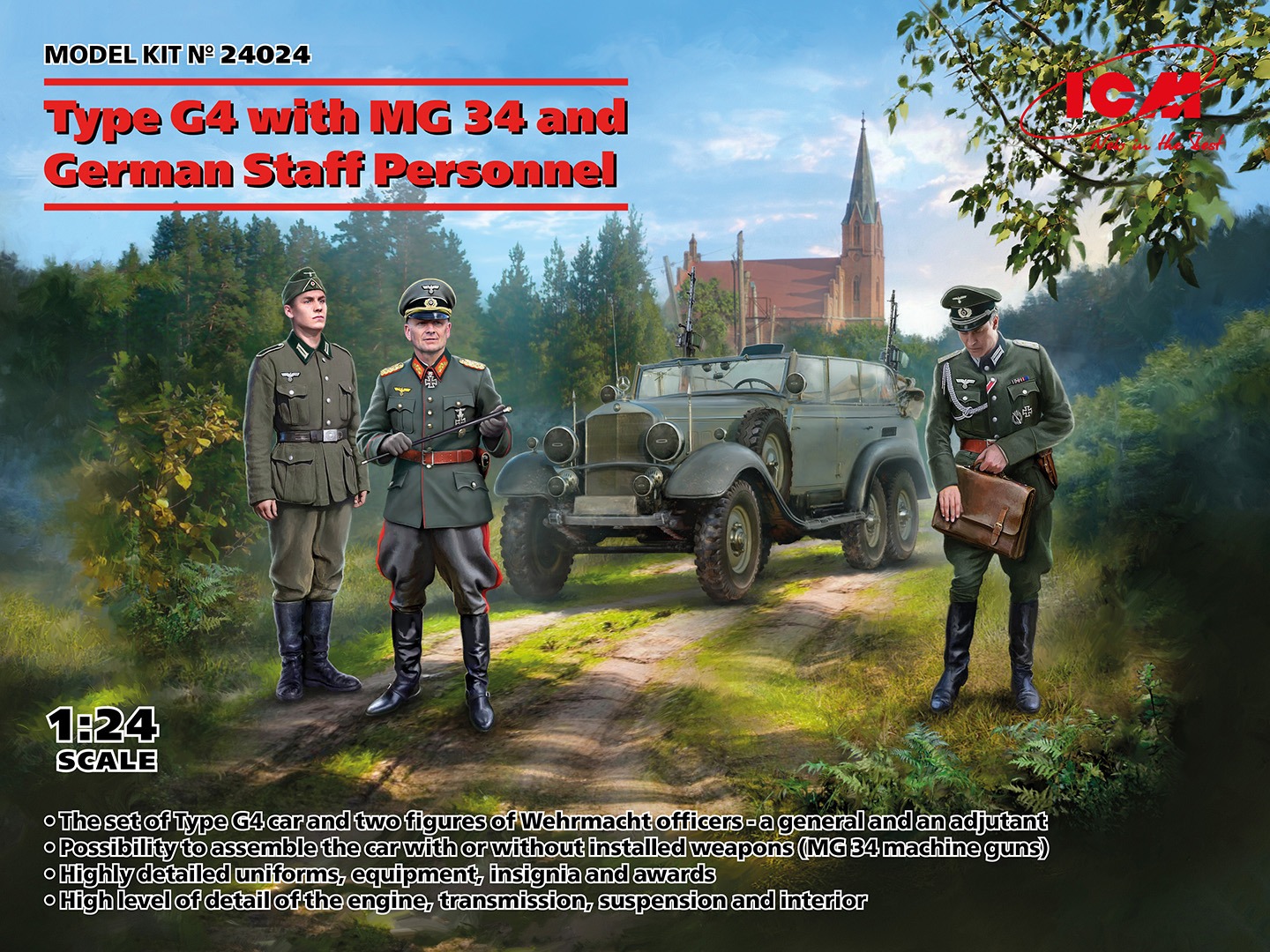 1/24 Type G4 with MG 34 and German Staff Personnel
1/24 Type G4 with MG 34 and German Staff Personnel
The personnel of the Wehrmacht officer corps were distinguished by their high standards. At the beginning of World War II, it represented a unique, corporately closed organization with its own notions of officer honor and moral principles. Many of them were former officers of the Imperial German Army. Staff officers played a significant role in the Wehrmacht, enjoying special attention and fulfilling crucial roles in directing operations at all stages of the war. A diverse fleet of vehicles, including the versatile off-road four-door sedan G4 (W31), was used for the transportation of staff officers. Developed by Daimler-Benz in 1934, it was produced until 1939 in a version featuring a four-door convertible roof. This vehicle boasted an 8-cylinder engine with a power of 100 hp (later models had 110 hp) and accommodated six passengers. Some vehicles were equipped with MG 34 machine guns (one or two). They served the purpose of transporting the command staff of the Wehrmacht and were also employed for the protection and escort of staff columns.
 1/32 Gloster Sea Gladiator Mk.II With Royal Navy pilots
1/32 Gloster Sea Gladiator Mk.II With Royal Navy pilots
Air forces of the Royal Navy at the beginning of World War II consisted of 20 squadrons with a total of 232 aircraft. The tasks of naval aviation included reconnaissance, spotting for battleships, offensive operations against enemy warships and merchant vessels, and protection against submarines and enemy aircraft. Squadrons typically had 9-12 aircraft of the same type, although sometimes their composition was mixed. A notable feature of British naval aviation before World War II was the significant number of biplane aircraft. This was due to their superior flying characteristics for deck landings in open seas. The single-seat biplane fighter, Gloster Sea Gladiator, was produced from 1938 and was a naval version of the land-based Gladiator fighter. The deck variant differed from the land-based one with a reinforced lower wing, modified equipment, a tailhook for landing, and a life raft housed beneath the fuselage. Between December 1938 and February 1939, 60 Gloster Sea Gladiators were produced, with an additional 38 aircraft obtained by converting land-based Gladiator Mk.II fighters.
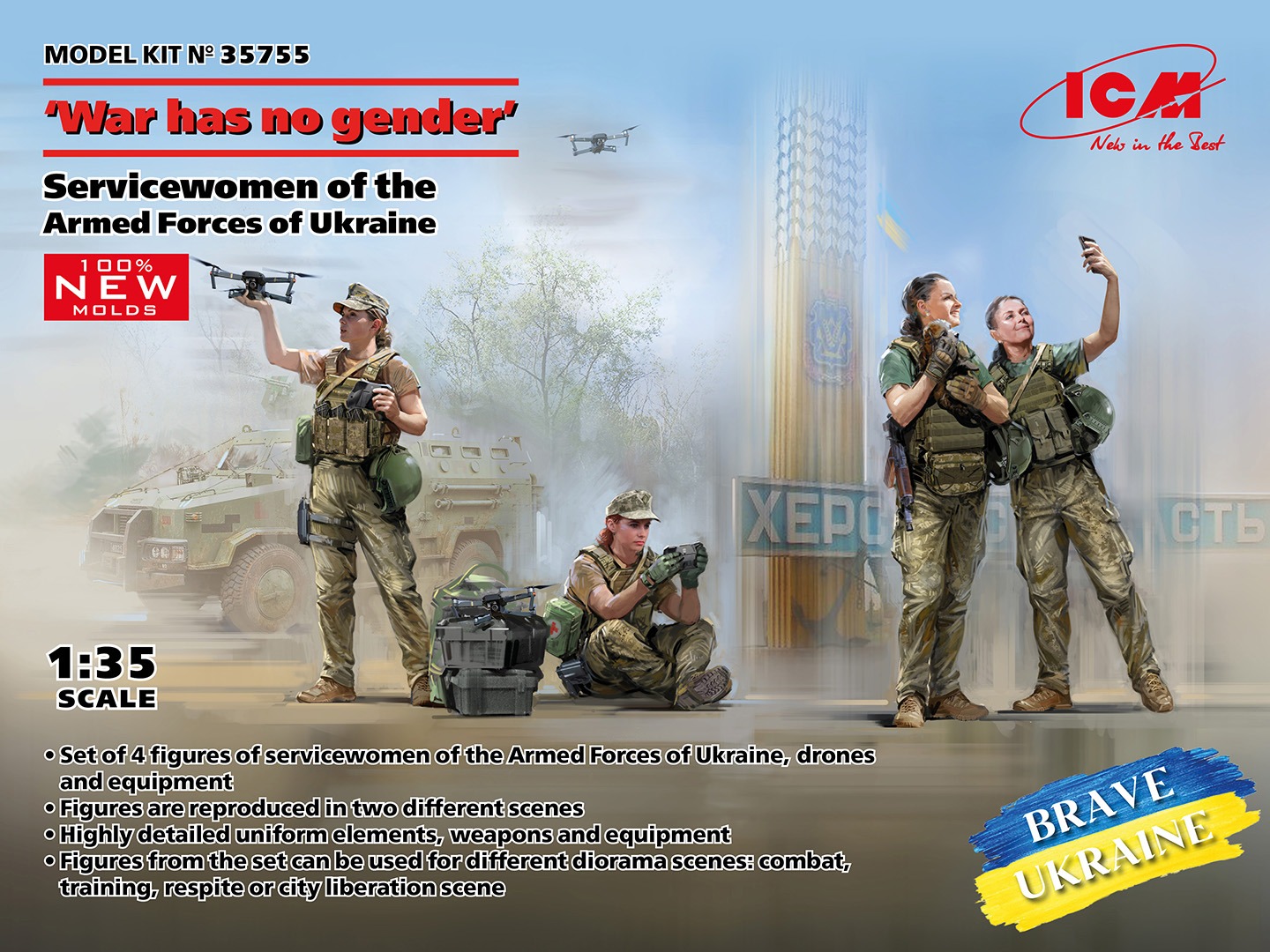 1/35 “War has no gender”
1/35 “War has no gender”
Servicewomen of the Armed Forces of Ukraine
As of October 2023, there were almost 43 thousand female servicemen in the Armed Forces of Ukraine. Ukraine has one of the highest rates of women in the armed forces among the armies of the world, including NATO armies. In the past, women primarily served in auxiliary positions such as doctors, signalmen, or cooks. However, with the onset of full-scale hostilities in February 2022, more and more women have taken on combat roles such as driving combat vehicles, operating grenade launchers, machine guns, snipers, and drones. Many women also serve as commanders of combat vehicles, units, and reconnaissance groups. Lieutenant General Serhiy Naiev, the Commander of the Joint Forces of the Armed Forces of Ukraine, emphasizes, “What unites them all is that they are true Ukrainian women who could not stay at home when their Motherland cried out for help to the world. We have noticed and felt how our women have toughened and transformed during a year and a half of large-scale invasion, surpassing, in my opinion, the legendary Amazons.”
HobbyLink International
Hoblylink International Shop
eBay Store



